Spring Flowers in
San Diego
Nature
Shows Its Inner Beauty
Event Report 20170312
Back to Bill Caid's Home Page
The Experience
The recent warming trend
has been very sweet indeed. This has been a long, cloudy,
rainy, dreary and cold winter season. So, it is with no
small amount of relief we greated a recent sunny day. The
winter rains have supported an abundance of blooms close to our
home just a short walk away.
These photos were taken with a Sony A7RM2 with 90mm f/2.8 macro
lens and an Olympus EM-1 (mark 1) with 12-40 f/2.8 zoom lens on
two consecutive sunny days.
The photos below are
what we saw.
We
spotted this bloom in the shade in the neighbor's yard.
Because of the shade, the aperture was "opened up" resulting in
a very shallow depth of field. Note that only the center
of the flower is "critically focused" and both the near and far
side of the center structure are out of focus. Sony.

We live next to a canyon
and there are several stands of Jade Plants on the canyon rim;
this one was in early-bloom. Sony.

Another Jade Plant further down the street was further
along. These are small flowers perhaps 1/2" in
diameter. Olympus.
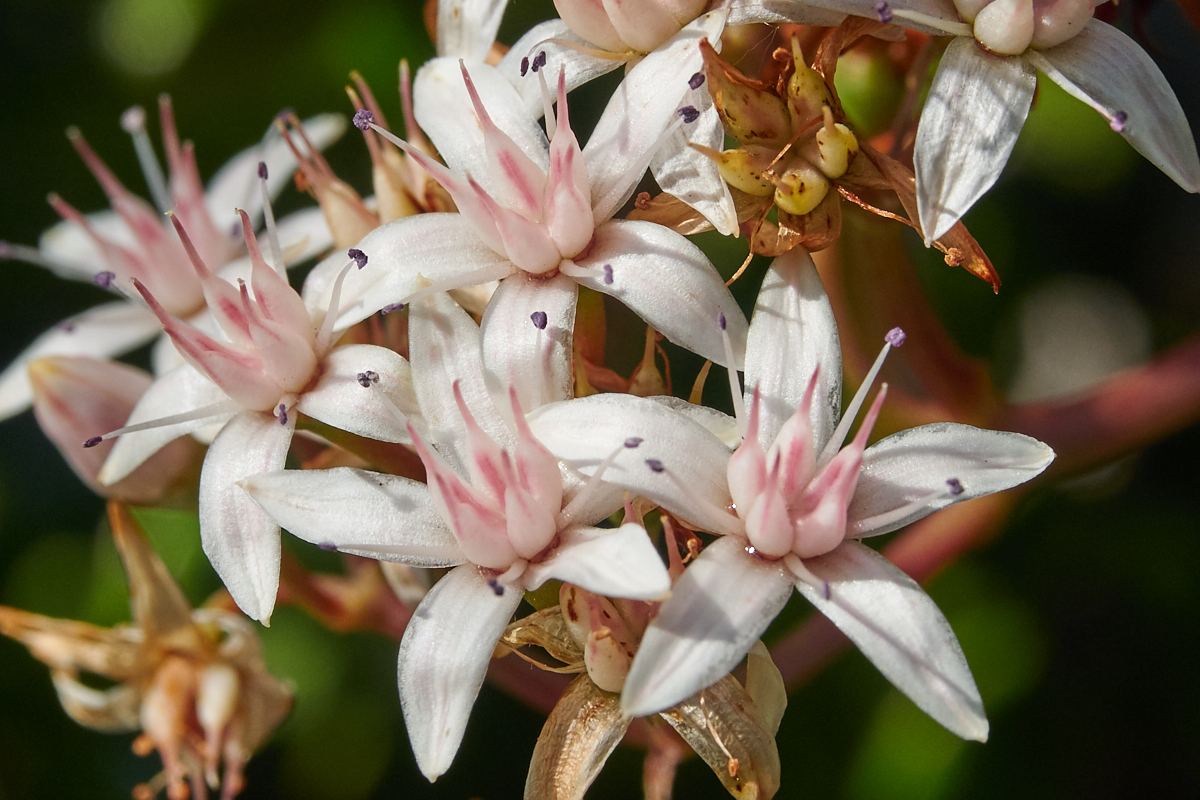
When "happy" (i.e. sufficent water) the Jade Plant puts out
clusters of blooms. Olympus.
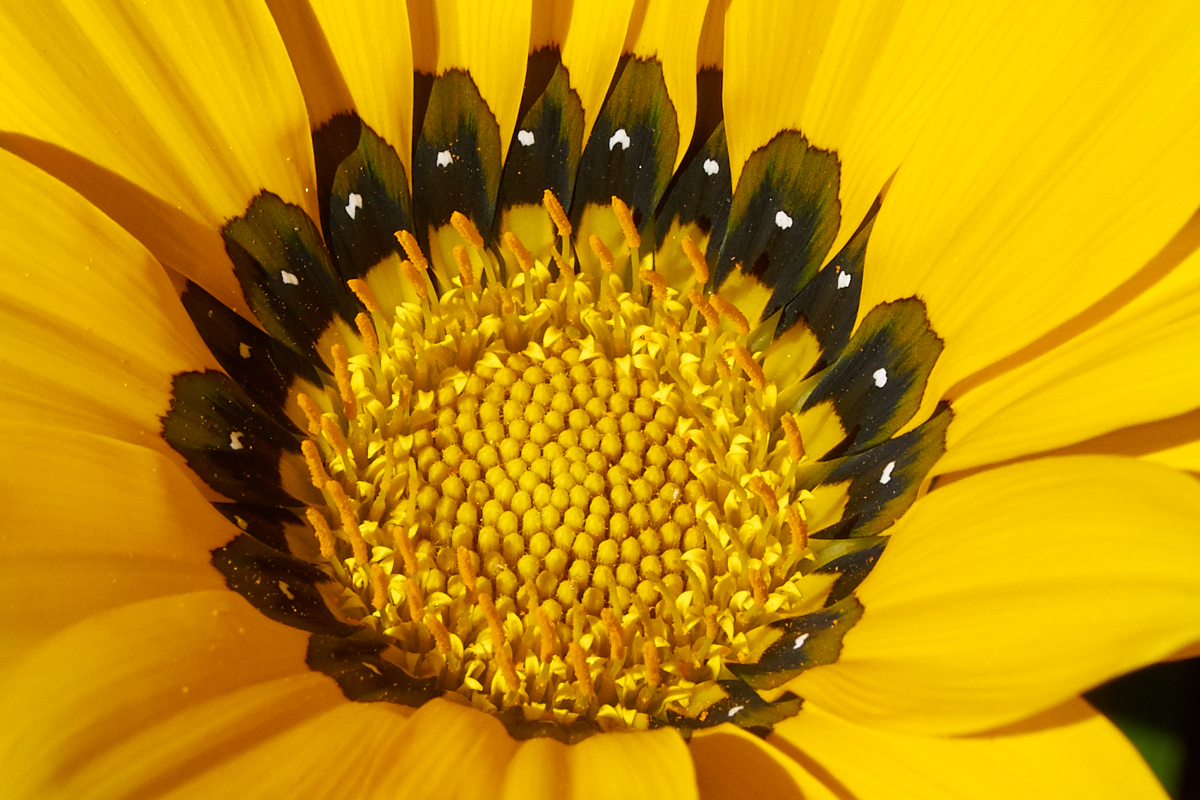
I thought that this flower was a California Poppy, but research
shows that is not true. I am not sure what it is, but it
has a very complex center structure. In this flower, the
perimeter of the bloom is going active first, with the buds in
the center only days away from sprouting. Sony.
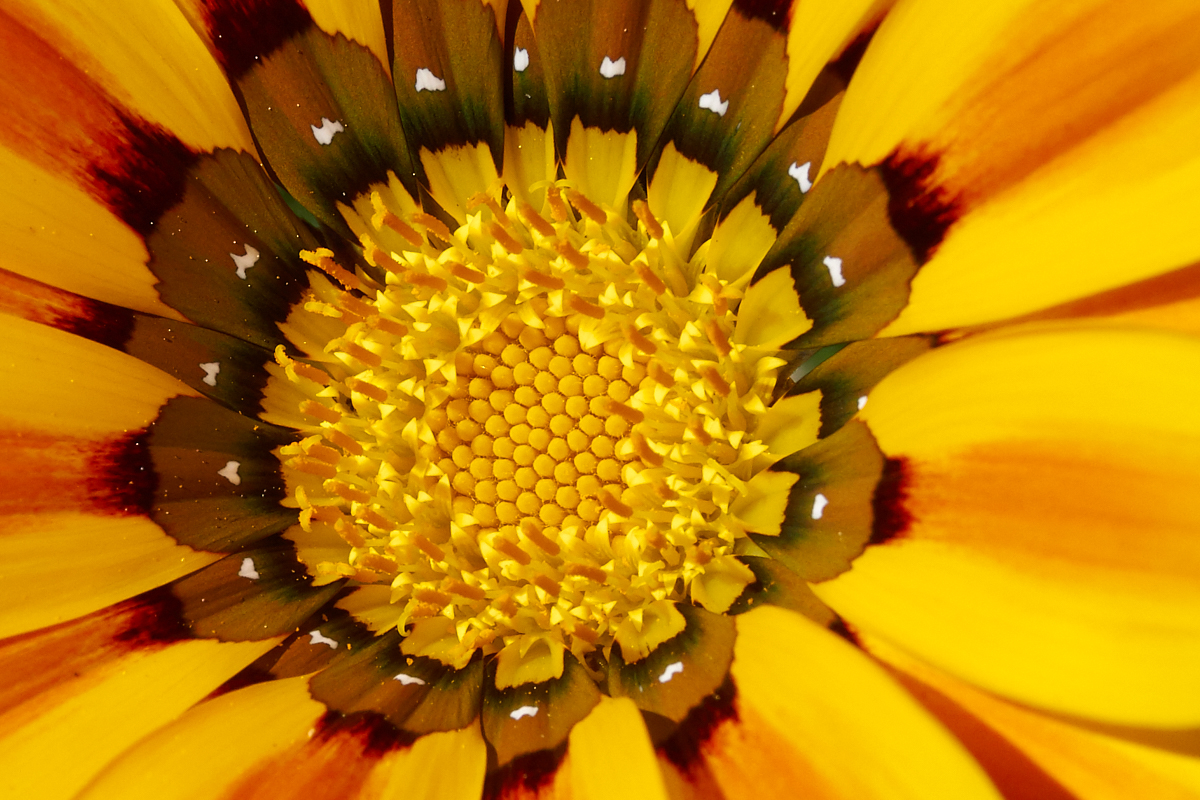
This is a different flower and one can see that it is further
along in the process as shown by the sprouts around the edge of
the center. Olympus.
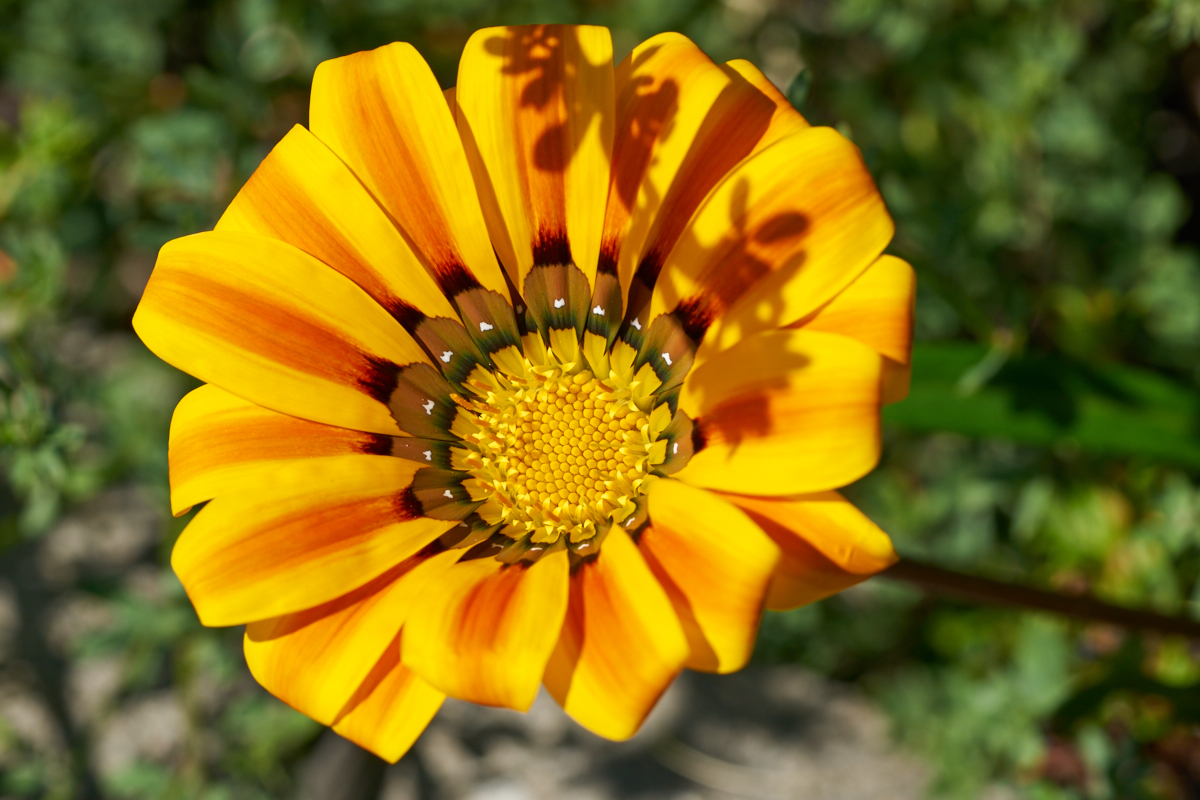
If one of my viewers knows what kind of flower this is, email be
at bcaid "at" "yahoo" "dot" "com". Sony.

When taking the photo, due to limitations of the view finder, I
could not see the fine cillia on the buds in the center; they
were only discovered when I reviewed the photo on the computer
screen. Sony.
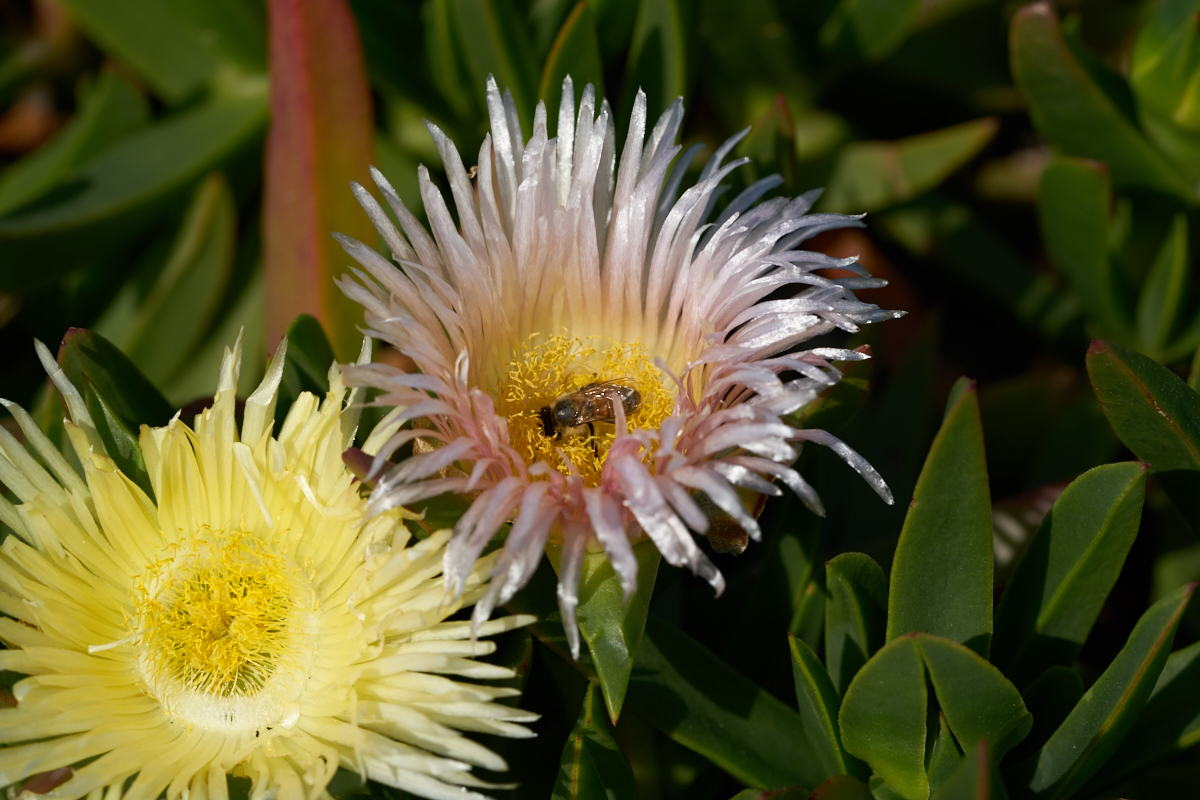
Further down the street was a spread of common ice plant in
bloom. The big, bright blooms attracted plenty of
bees. Sony.
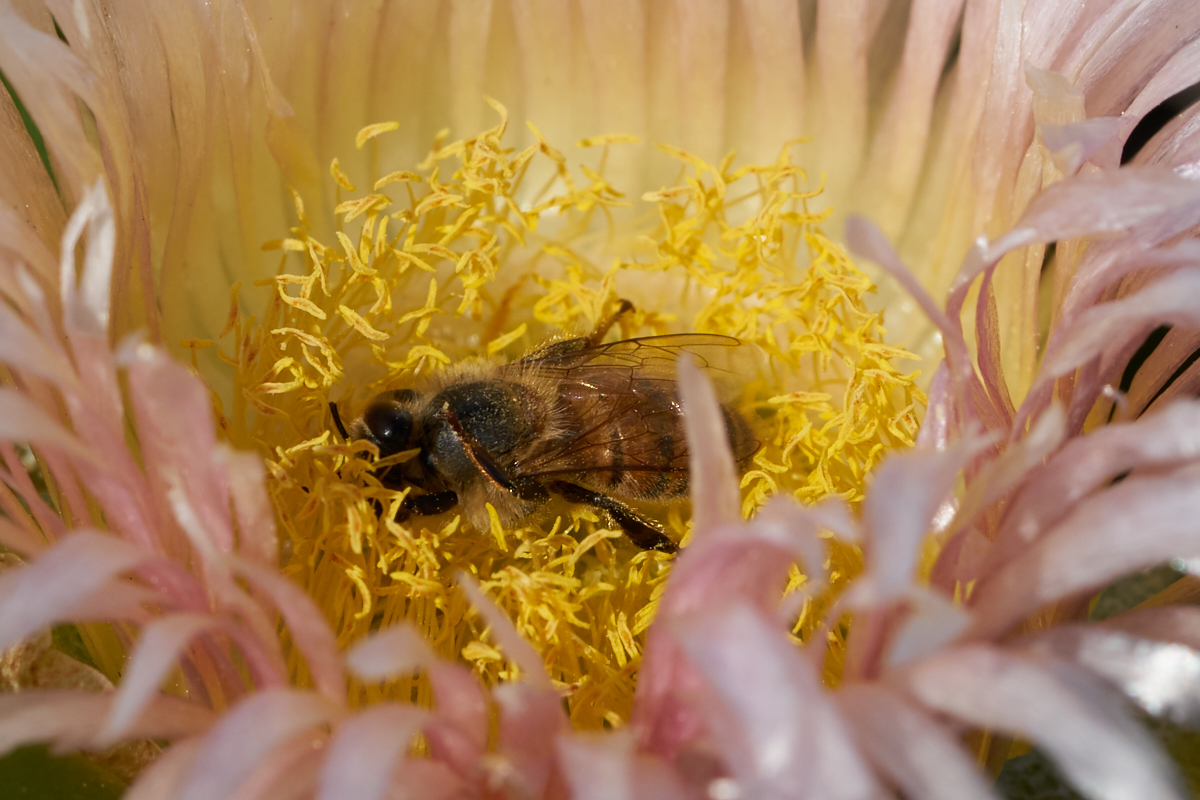
The bees were having a field day, literally wallowing in the ice
plant pollen. Sony.
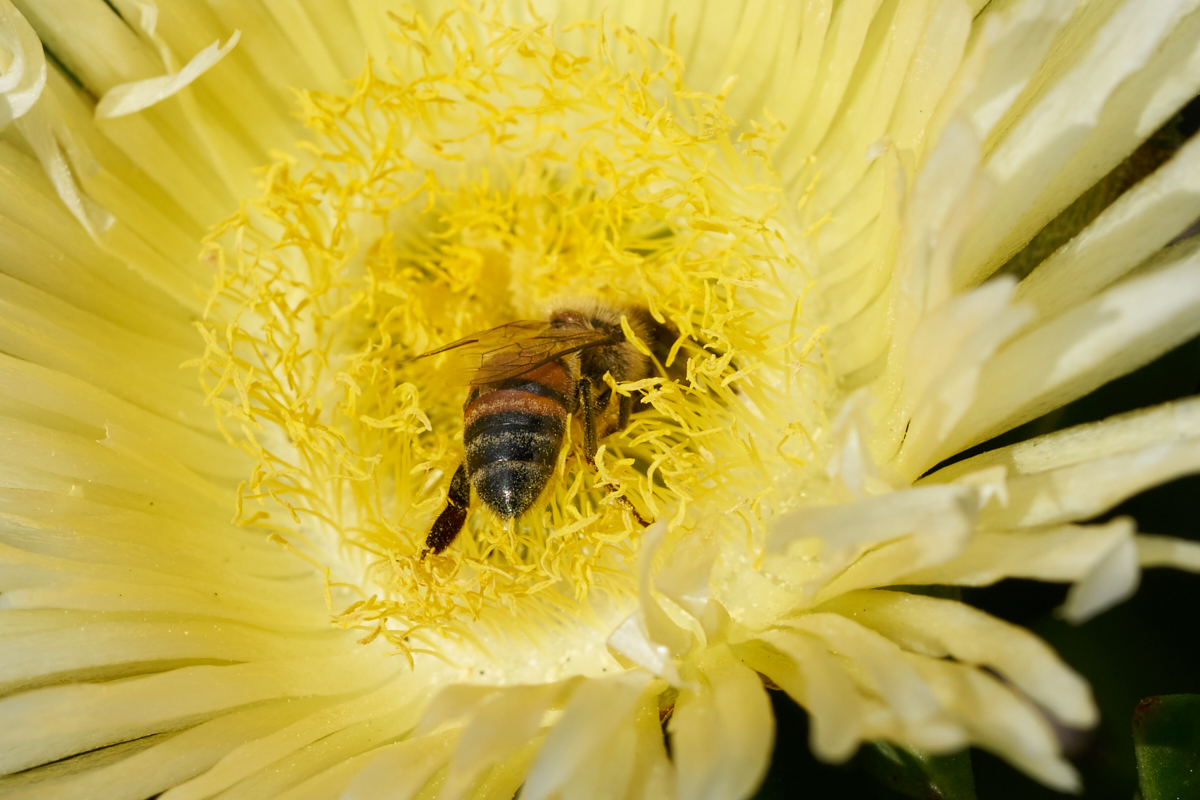
This bee is face-deep in the nectar at the bottom of the
bloom. Sony.
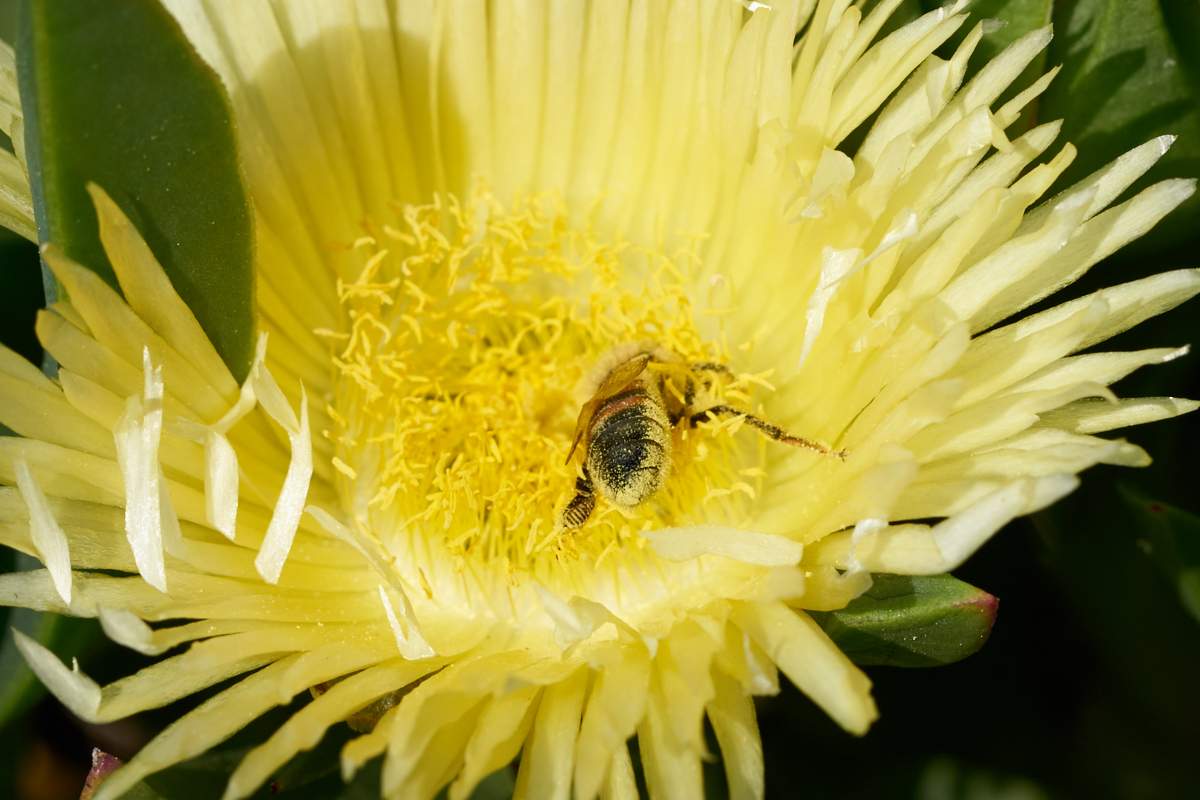
This bee is coated in pollen on his abdomen. Note that
this bee is not the same species as bees in later photos; there
is no pollen sac on the rear legs. Sony.
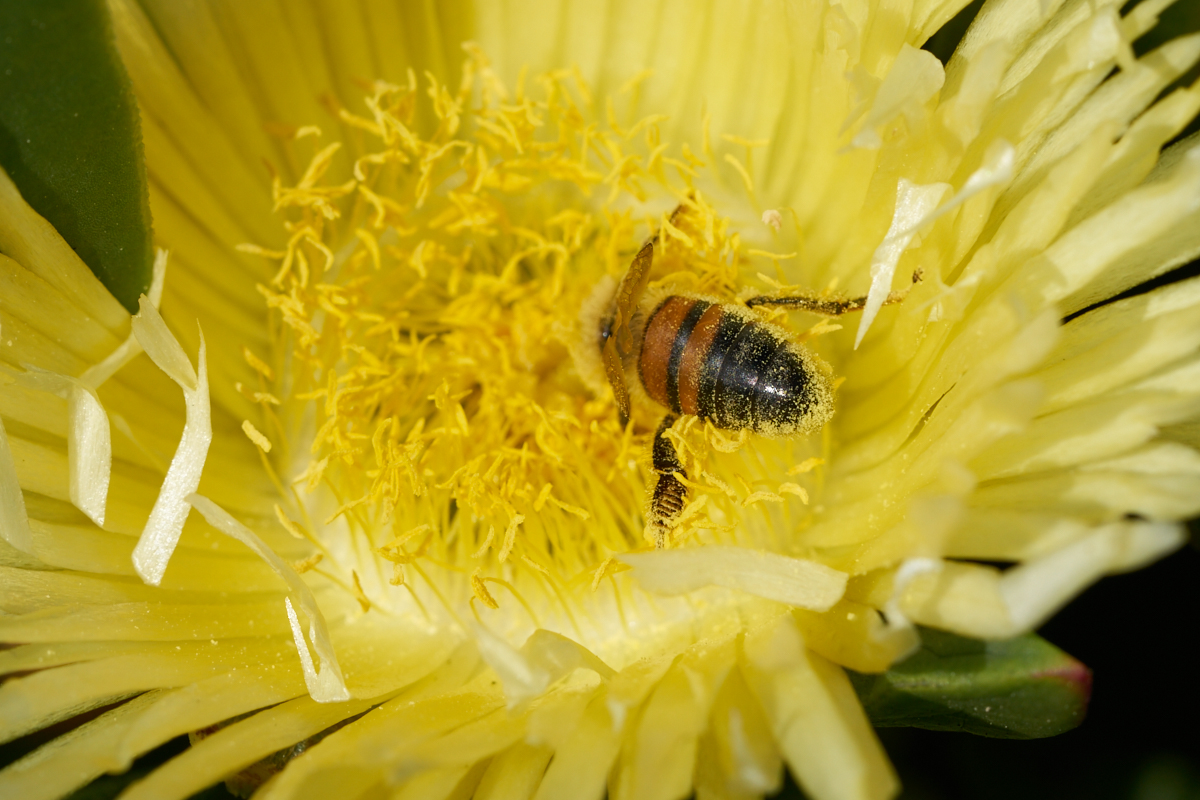
No pollen sac on this fellow either. Sony.
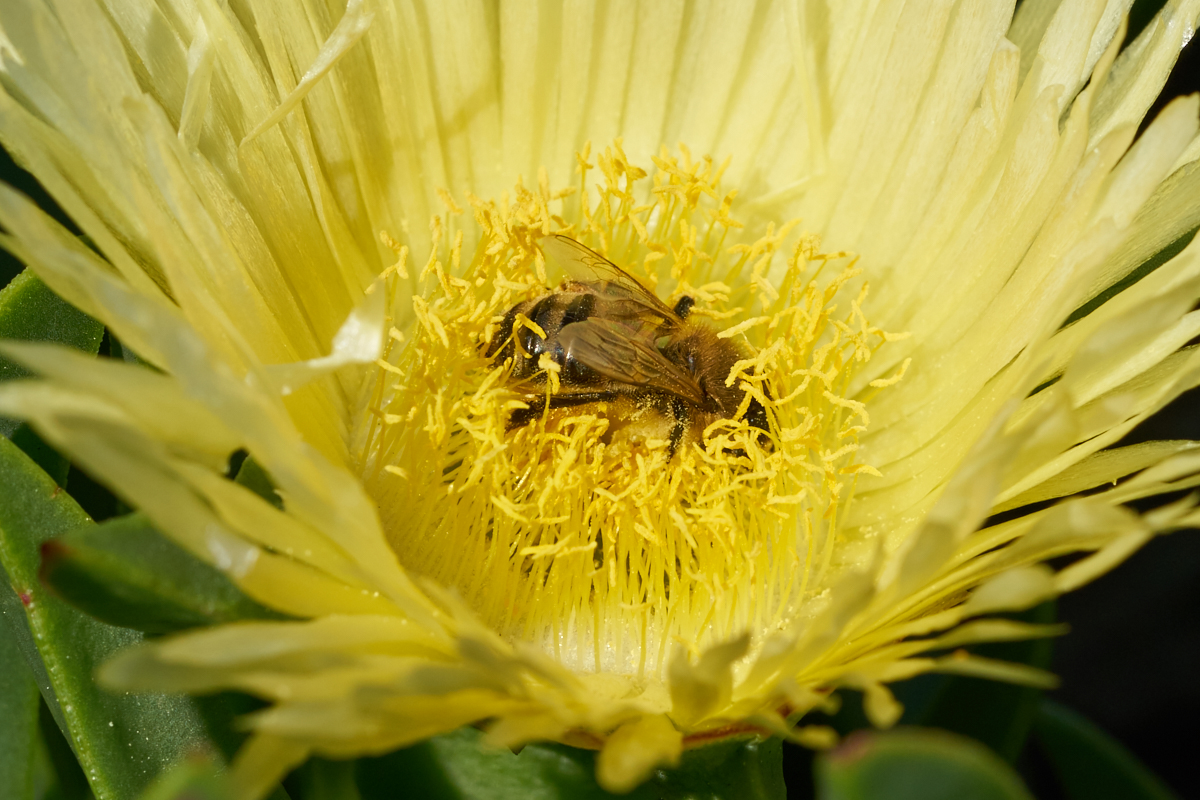
This guy was like a hog at the trough. Sony.
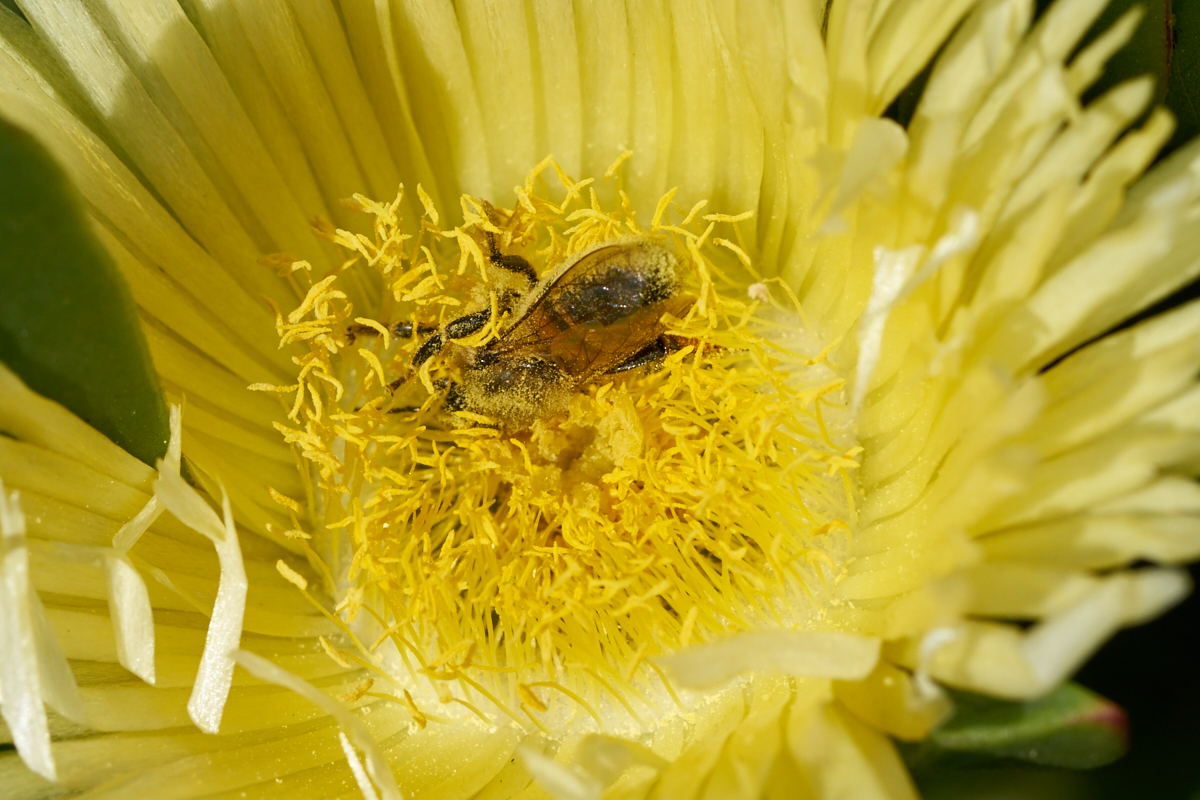
Literally wallowing in the pollen. Sony.
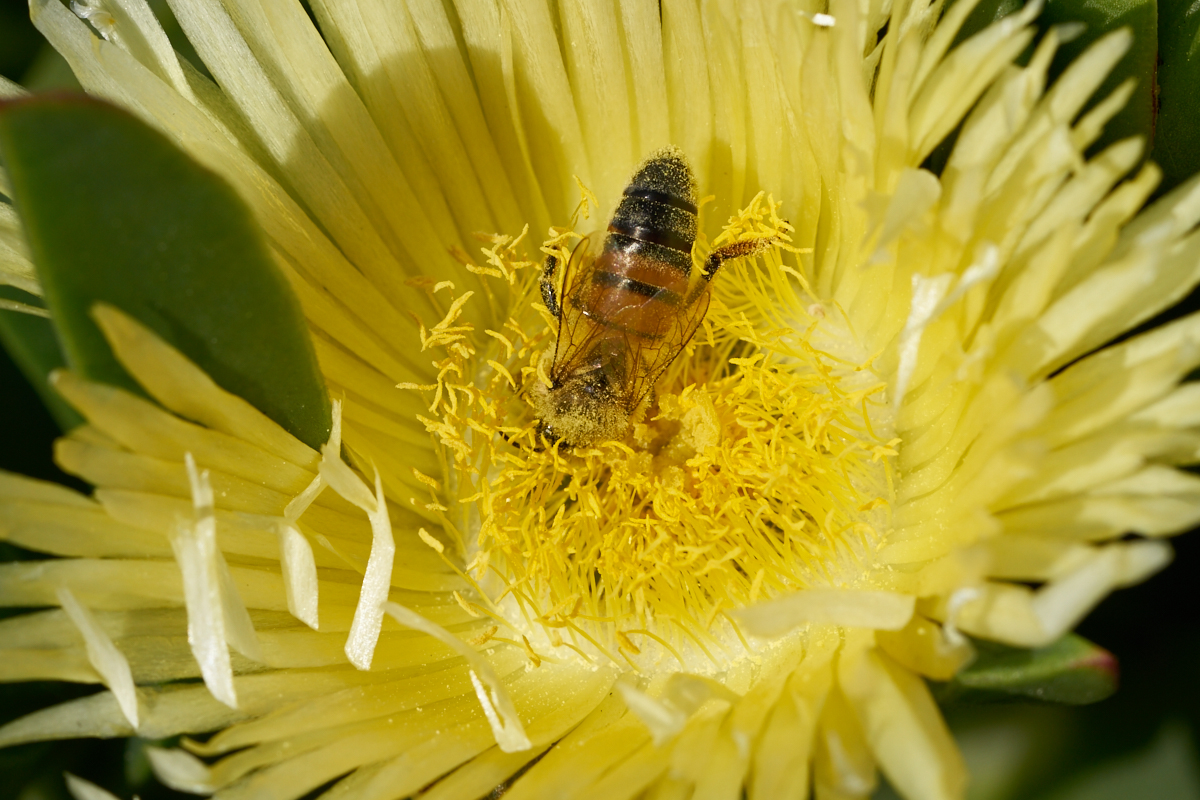
Sony.
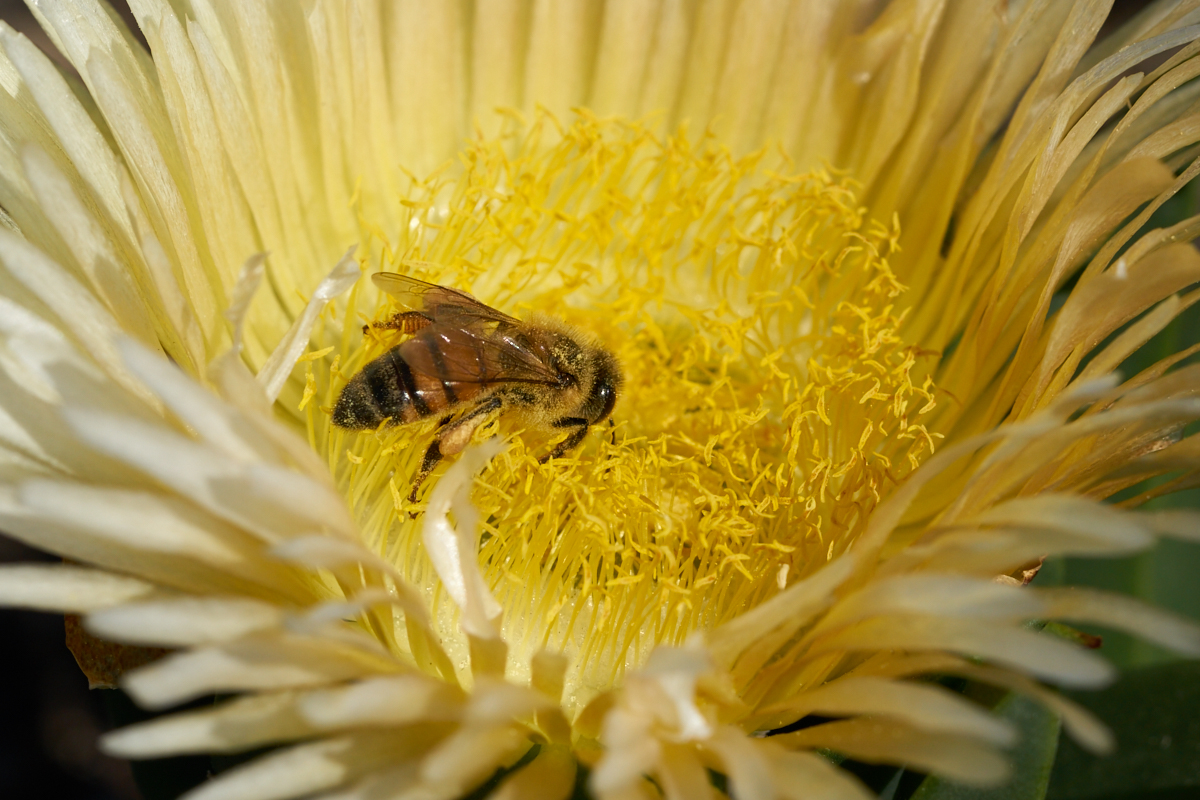
This bee has pollen sacs, the right one visible at the rear of
the bee's abdomen. Olympus.
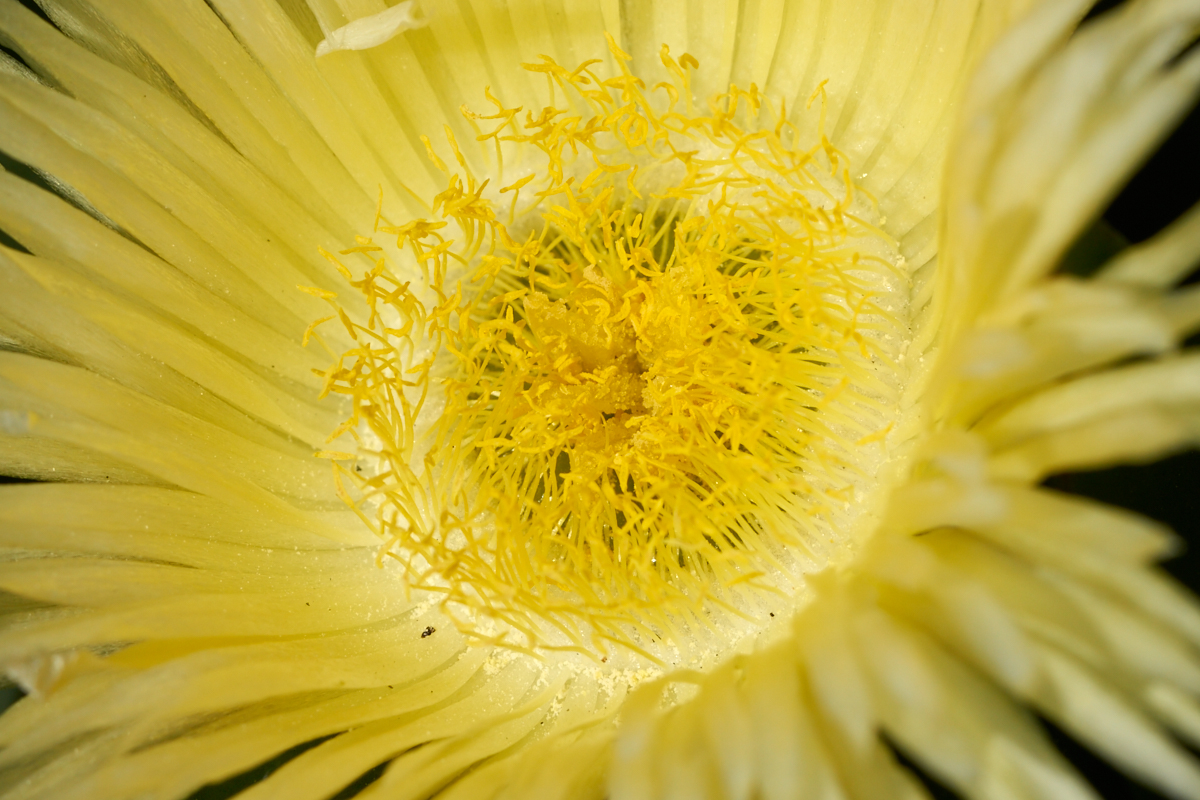
This flower has had most of its pollen taken away. The
center of the bloom is about 1 inch in diameter. Olympus.
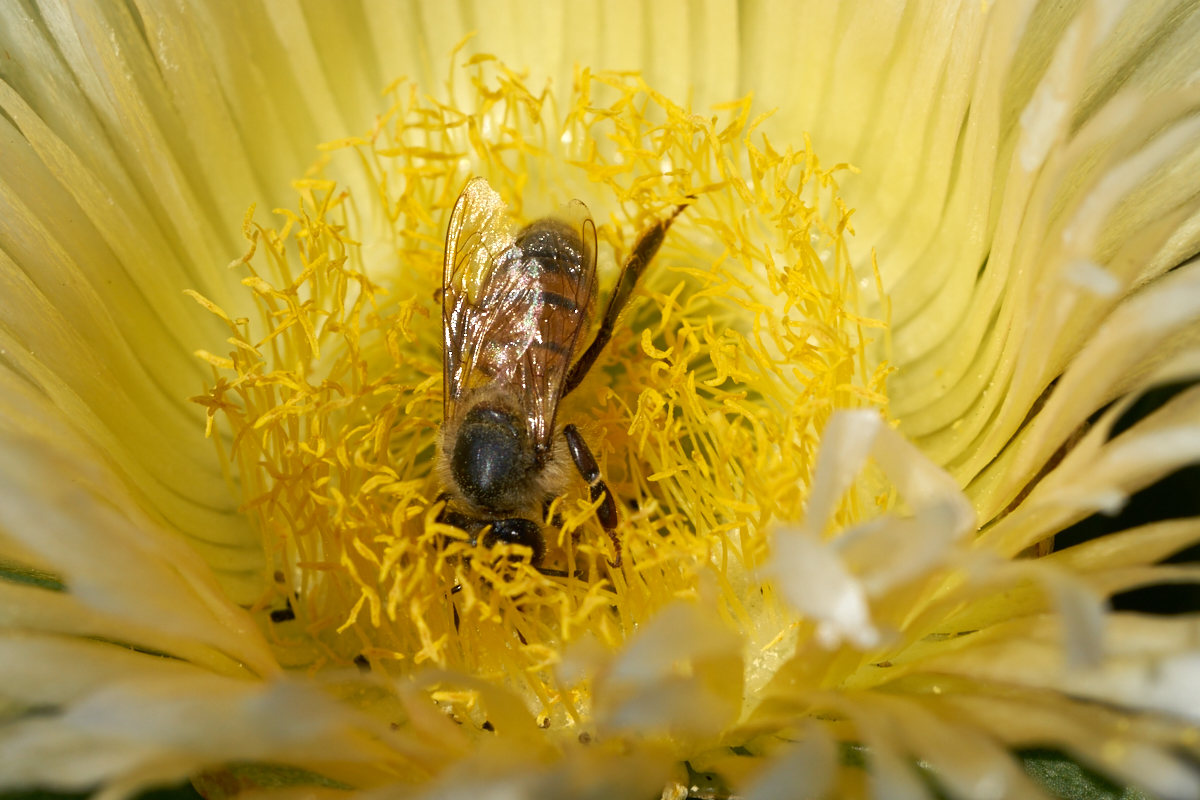
No pollen sacs on this fellow either. Sony.
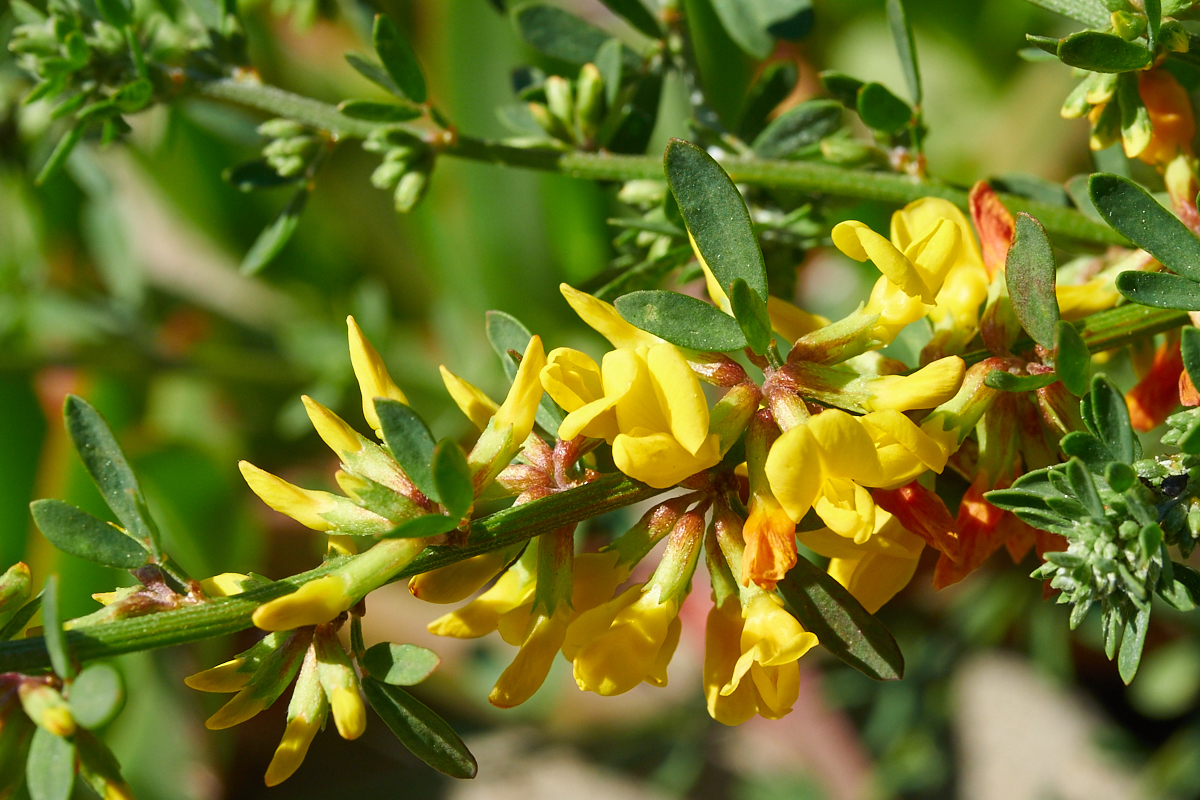
A nearby bush on the canyon rim had nice blooms too.
Olympus.
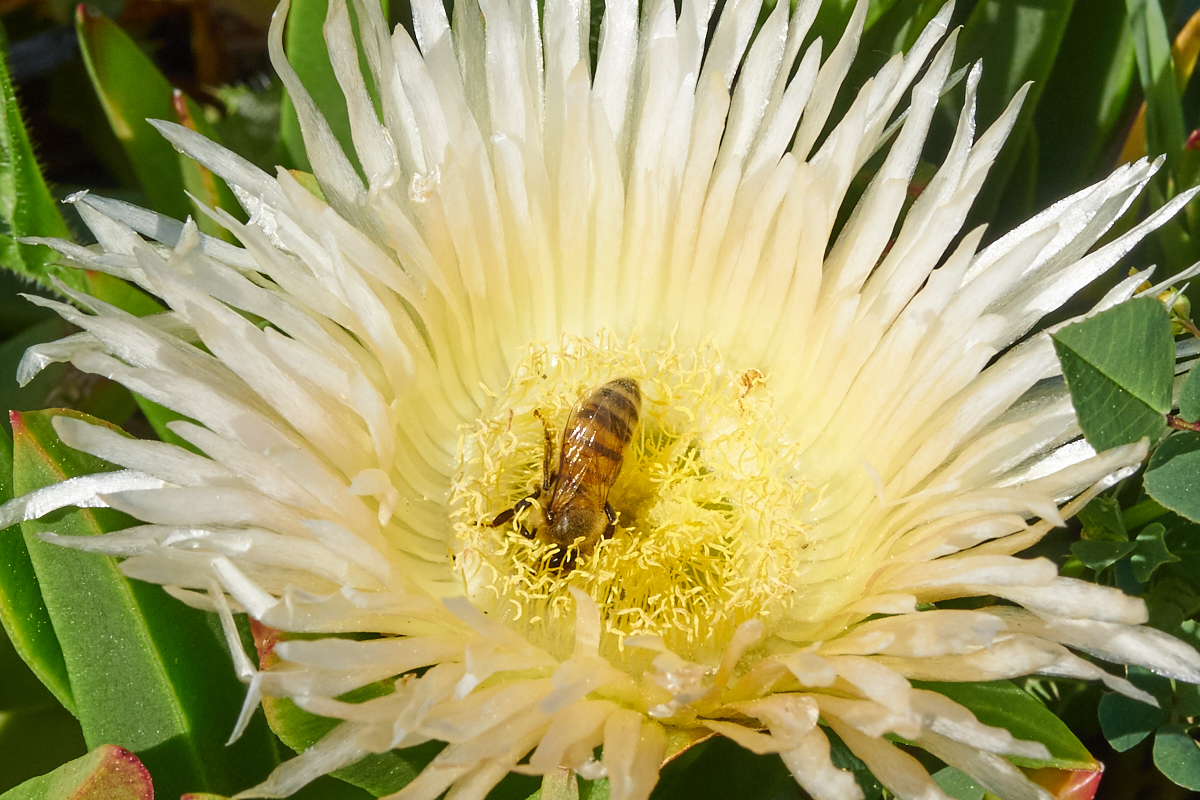
The following afternoon, we returned to see how things were
progressing. Olympus.
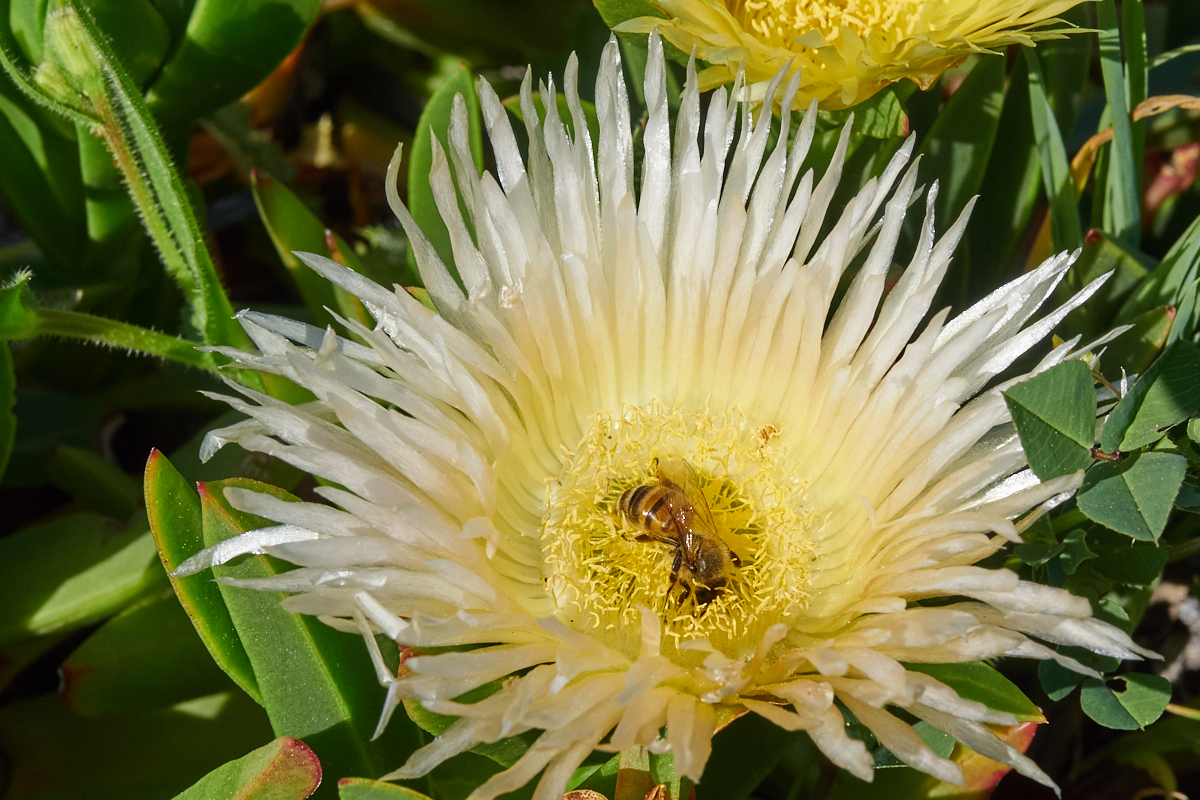
Olympus.
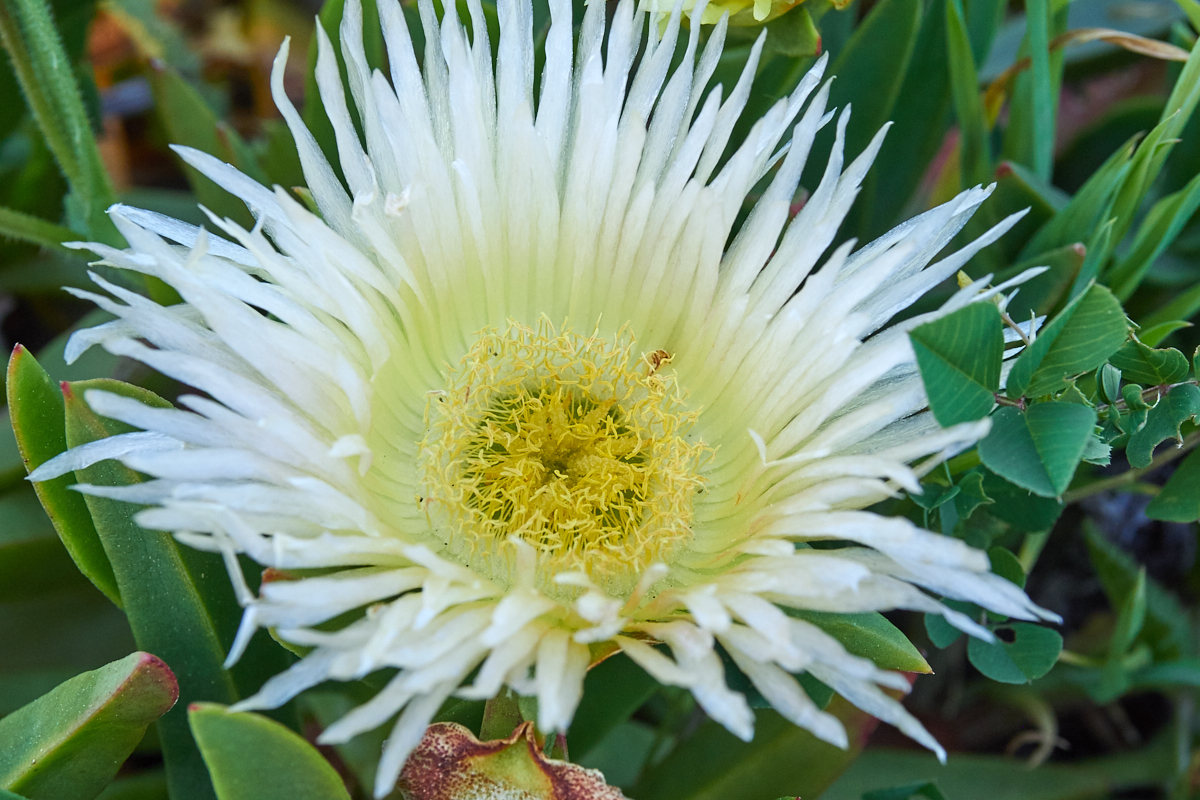
This bloom has been cleaned out of both pollen and nectar.
Olympus.
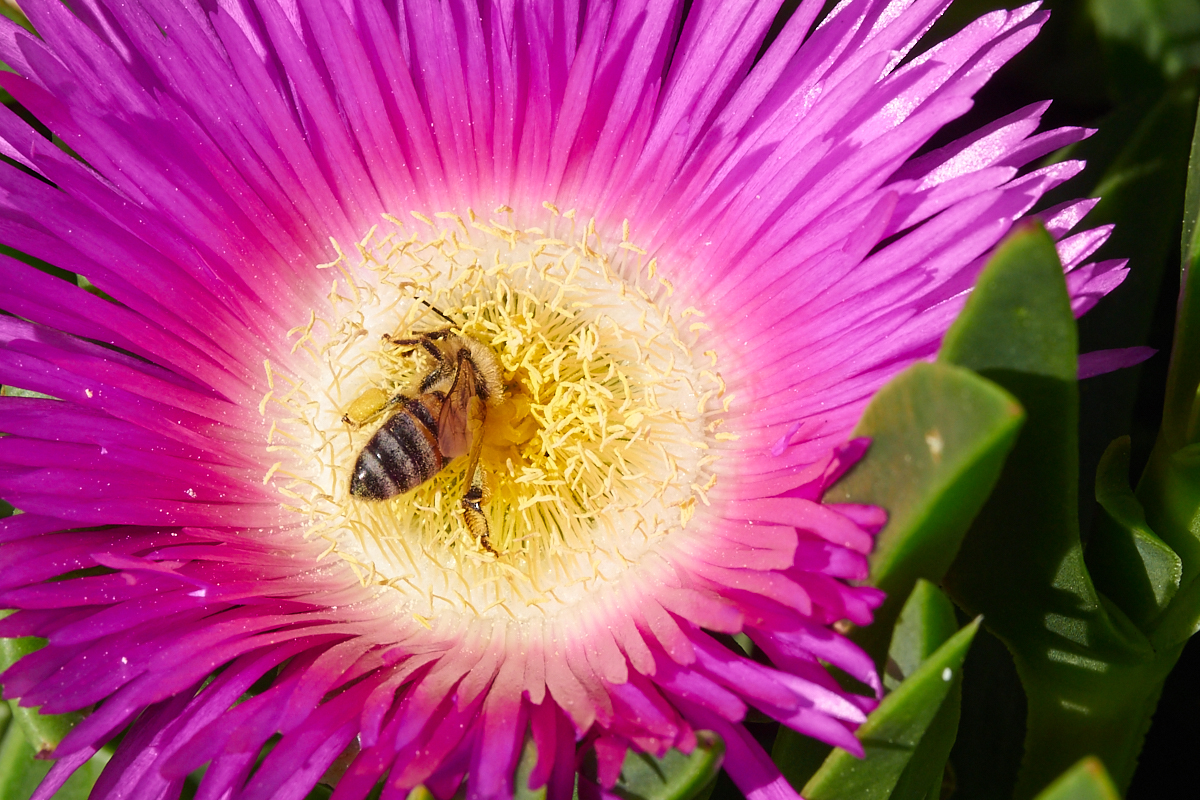
New species of bee: note the pollen sacs on the rear
legs. Olympus.
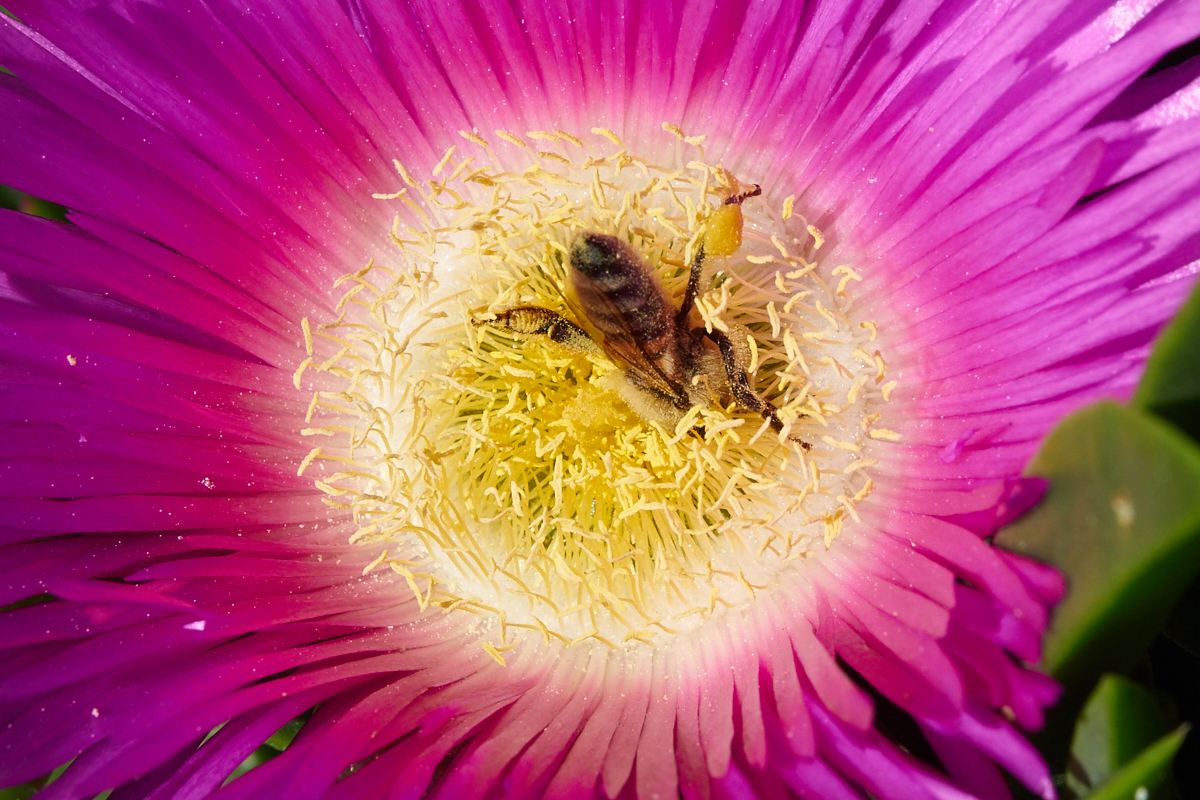
The sac at the top appears full. Olympus. Note the
pollen grains spread across the petals of the bloom.
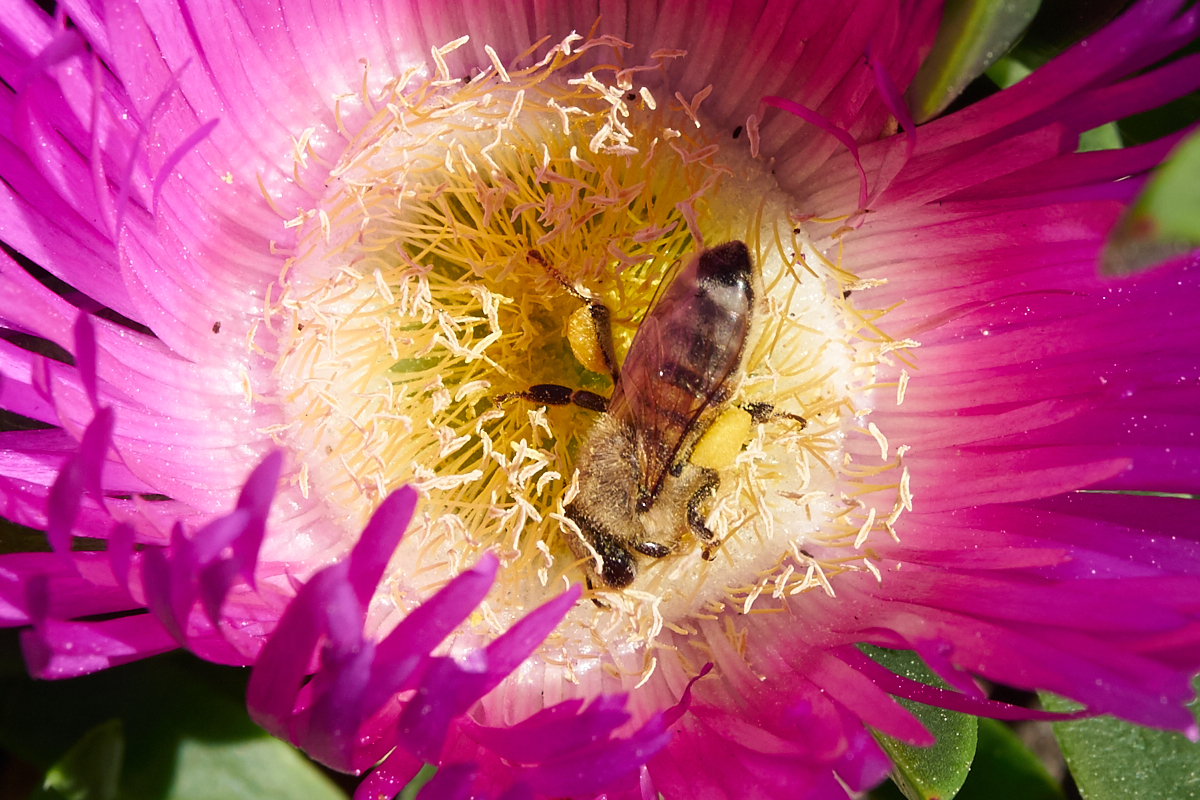
A different bee, both sacs are full. Olympus.
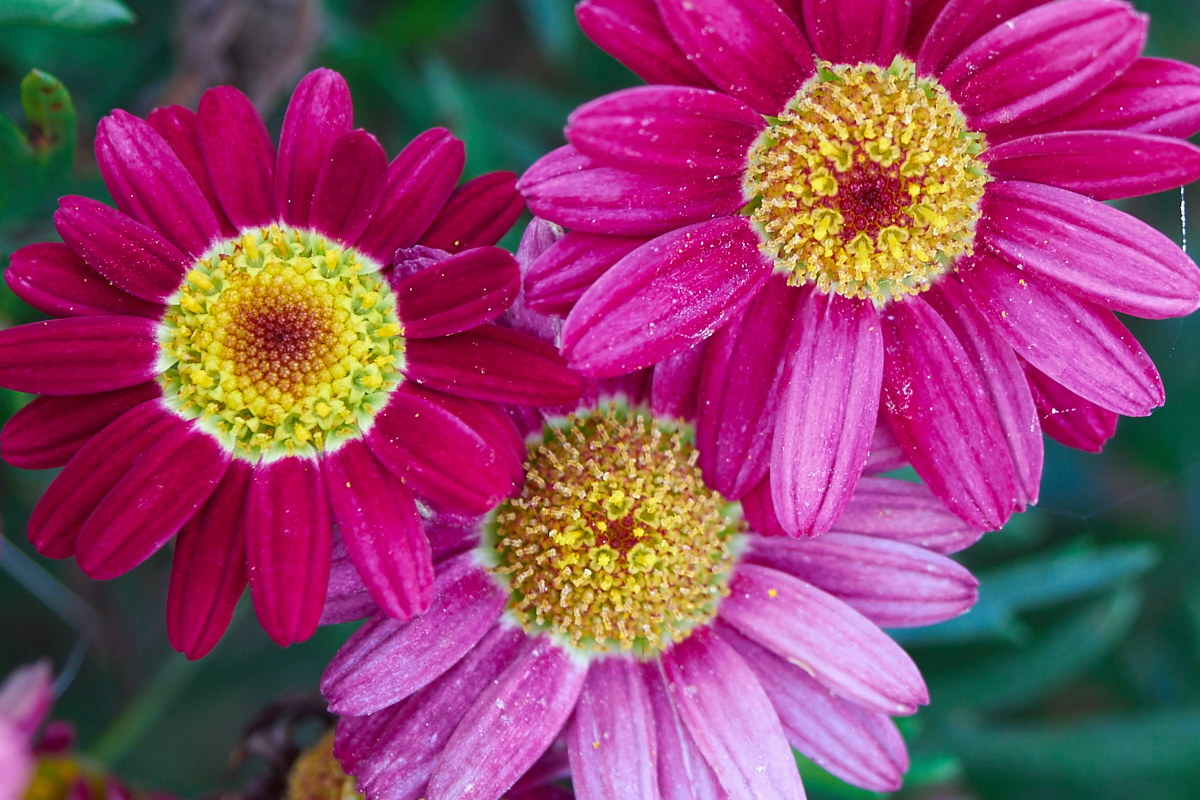
Small blooms in a neighbor's yard. Note the pollen spread
around by the insects. The center of the bloom is about
the diameter of an M&M candy. Olympus.
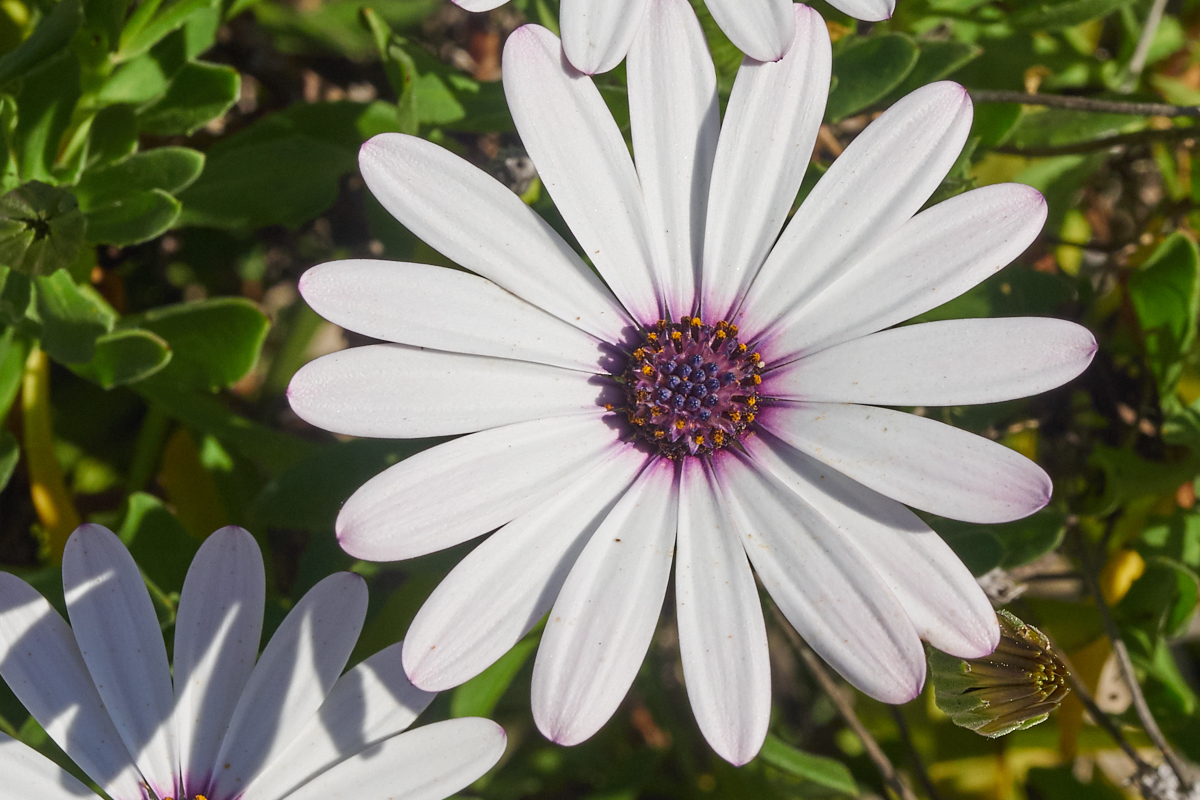
Another yard flower denuded of pollen. Olympus.
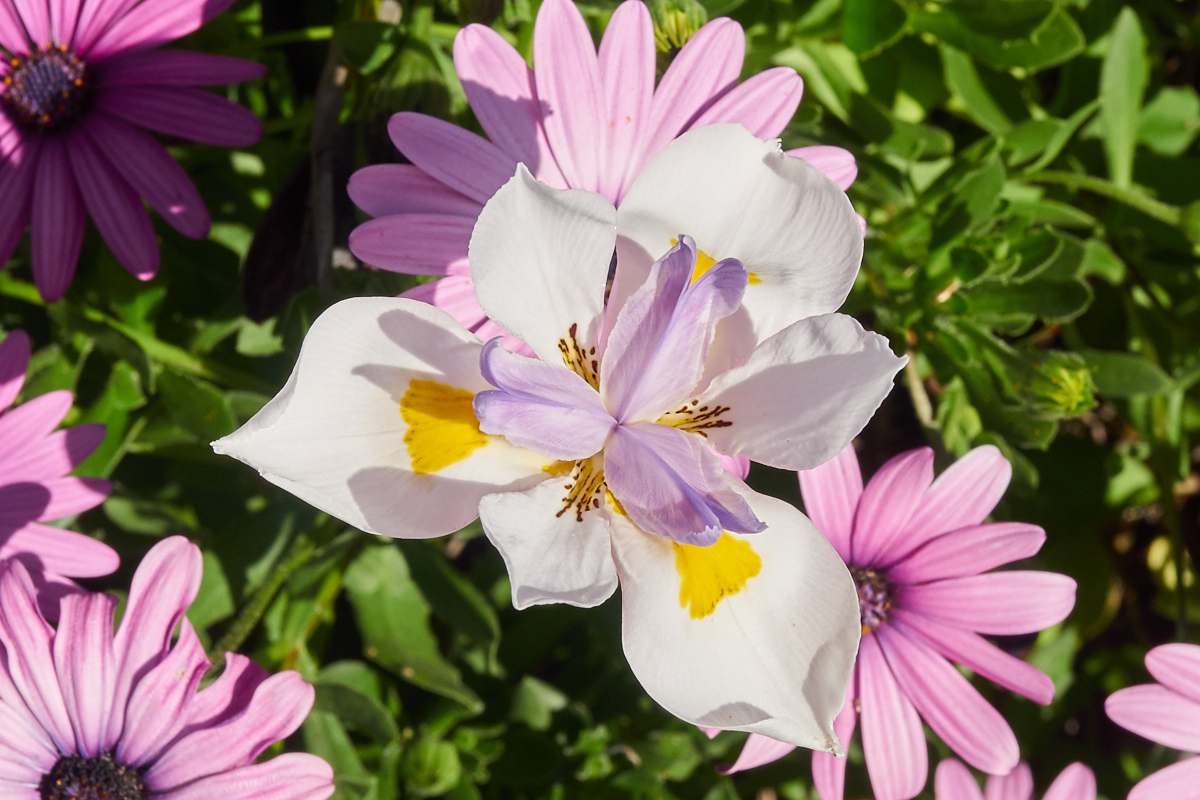
Another yard flower, a lily or an iris perhaps. Olympus.
The bright
sunshine made taking photos much easier than in the shade.
I used two cameras for these photos: first was a Sony A7R2 with
a 90mm macro lens and the other my Olympus EM-1 with 12-40mm
lens (not a macro). Oddly, despite the fact that the Sony
has more than twice the pixels (42) versus the Oly (16) and the
Oly had a standard zoom lens, the photos from the Sony were not
markedly better. I am guessing that the image
stabilization in the Olympus was making up the difference.
I will have to run some tests to be sure. So there is no
confusion, I am very pleased with the output of both cameras,
but it is odd that the Oly performed as well as it did.
One explanation is the "zoom level" required to get a pleasing
image for this page. On the Sony, given that the output
photos are 8000x5000 pixels, a crop of almost 8X is required to
get to pixel level for this page (photos are 1200 pixels on the
long side). To tell the story, the Sony images were
cropped much less aggressively than the Oly.
After our
short walk, Kathleen spotted a Bobcat that was "doing rounds"
though the houses on the canyon rim. We see him from time
to time, but rarely in the middle of the afternoon.
We're both
very happy that spring (and warmer weather) are finally here.
Back to Bill Caid's Home Page
Copyright Bill Caid 2017. All rights
reserved.





























